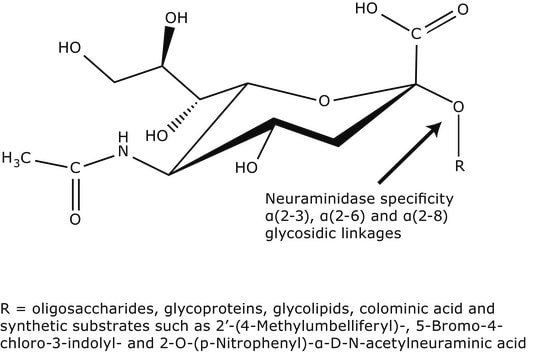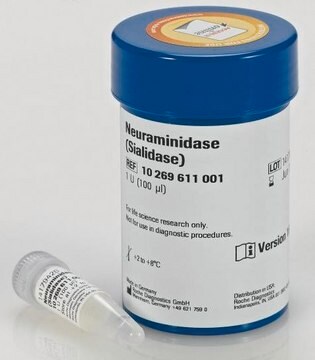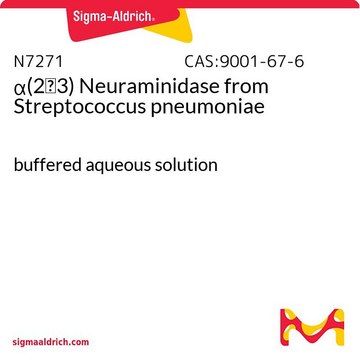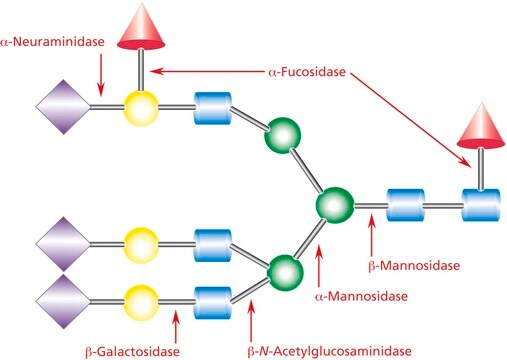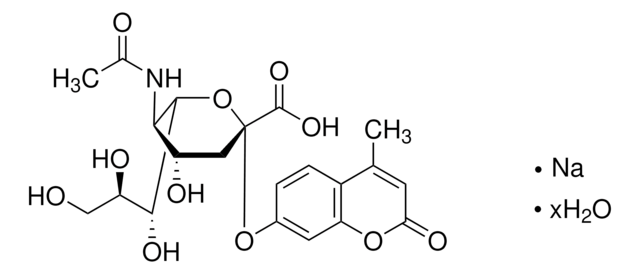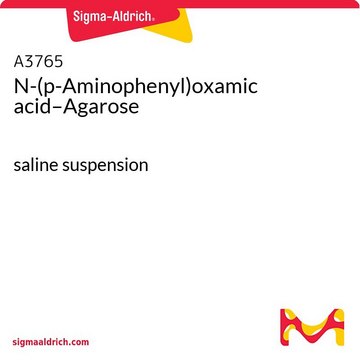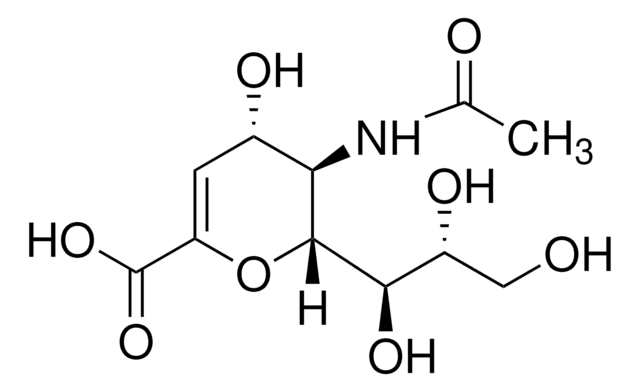N3001
Neuraminidase from Clostridium perfringens (C. welchii)
Type VI, lyophilized powder, 6-15 units/mg protein (using 4MU-NANA), 2-10 units/mg protein (mucin)
Synonym(s):
Acyl-neuraminyl Hydrolase, Receptor-destroying enzyme, Sialidase
About This Item
Recommended Products
biological source
Clostridium perfringens str. 13
Quality Level
type
Type VI
form
lyophilized powder
specific activity
2-10 units/mg protein (mucin)
6-15 units/mg protein (using 4MU-NANA)
composition
Protein, ≥50% biuret
storage temp.
−20°C
Gene Information
Clostridium perfringens str. 13 ... nanI(988807)
Looking for similar products? Visit Product Comparison Guide
General description
Application
Biochem/physiol Actions
Preparation Note
Analysis Note
signalword
Danger
hcodes
pcodes
Hazard Classifications
Resp. Sens. 1
Storage Class
11 - Combustible Solids
wgk_germany
WGK 1
flash_point_f
Not applicable
flash_point_c
Not applicable
ppe
Eyeshields, Gloves, type N95 (US)
Choose from one of the most recent versions:
Already Own This Product?
Find documentation for the products that you have recently purchased in the Document Library.
Customers Also Viewed
Protocols
Enzymatic Assay of Neuraminidase applies to products that have a specification for neuraminidase content by enzymatic determination.
Our team of scientists has experience in all areas of research including Life Science, Material Science, Chemical Synthesis, Chromatography, Analytical and many others.
Contact Technical Service